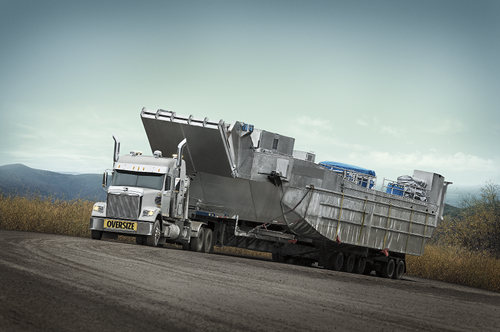One thing I’ve learned in over 20 years of trucking, there are pros and cons to each and every type of operation. The only way to know what’s right for you (without trying them all) is to make a list of what’s available, research the different operations and make a list of the pros and cons of each type.
The three major types of trucking types are dry van, reefer and flatbed. These three combined represent about 76% of the trucking operations in the U.S. The 76% breaks down like this:
- Dry Van – 34%
- Flatbed – 25%
- Reefer – 17%
The other types of trucking operations make up the remaining 24%. They include:
- Tanker
- Grain Hopper
- Dump
- Livestock
- Container
- Expedited
- Auto Transport
- Removable goose neck (RGN) or double drop
- Step Deck
- Other
If you pick a trailer type in the crowded 76% market of van, reefer or flatbed,  you can be sure of available freight as these are the big markets with the most shippers. However, the rates will be lower as there are more trucks looking for the loads. Dry van is the steadiest market throughout the year. Reefer is affected by the growing season and have very busy months and some months when there’s not a lot going on. It is then that the reefer becomes a very heavy dry van. Flatbed is affected similarly as building materials are the main commodity in this operation and the winter months are usually slow for that market.
you can be sure of available freight as these are the big markets with the most shippers. However, the rates will be lower as there are more trucks looking for the loads. Dry van is the steadiest market throughout the year. Reefer is affected by the growing season and have very busy months and some months when there’s not a lot going on. It is then that the reefer becomes a very heavy dry van. Flatbed is affected similarly as building materials are the main commodity in this operation and the winter months are usually slow for that market.
If you pick a trailer type in the not so crowded 24% of trucking, you will find less freight to fight for and you will find that the quality of the service is more important. You will also find a narrower field of companies to insure you, repair your equipment and find loads from.
Here are the major things to consider when weighing pros and cons of a trucking operation:
- Availability of freight – what percentage of deadheading will I be doing?
- Average freight rate – what is the average rate per mile of this type of trucking?
- Cost per mile to operate – will trailer type negatively affect fuel mileage? If yes, will there be higher revenues to make up for this?
- Cost of trailer and accessories – a good used dry van can be found for $18,000, whereas a similarly aged RGN is around $50,000.
- some tankers require PTOs and pumps on truck -$$$$
- Headache rack for open deck haulers - $$$$
- Load securing equipment: chains, straps, binders, tarps - $$$$
- Maintenance of equipment – you can usually walk away from a van or flatbed for the weekend. Carhaulers for example require constant lubrication, sanding and painting. The struggle with rust is real.
- Higher insurance rates – Hazmat, over-sized and auto transporters need considerably more liability and cargo insurance than others. This increases your cost to operate.
- Insurance claims – getting into a market where insurance claims are high is a market I’d steer clear from. I used to haul new cars and yes, I learned the hard way.
- Value of time – Vans and reefers usually spend way more time at a shipper/receiver than a flatbed. I’ve had a 47K load of lumber unloaded in 5 minutes.
- Physical labor – If you want to stay clean and catch up on paperwork while unloading, you may want to just bump a dock with your dry van. Tanker work is surprisingly clean work too.
As you can see, there are many decisions to make. I’ve learned a lot of lessons the hard way while trying most of these operations. The main thing to remember is that there’s no perfect trailer or trucking operation. You can’t have it all with one kind of trailer. Whatever you say “yes” to in trucking, requires that you say “no” to something else.